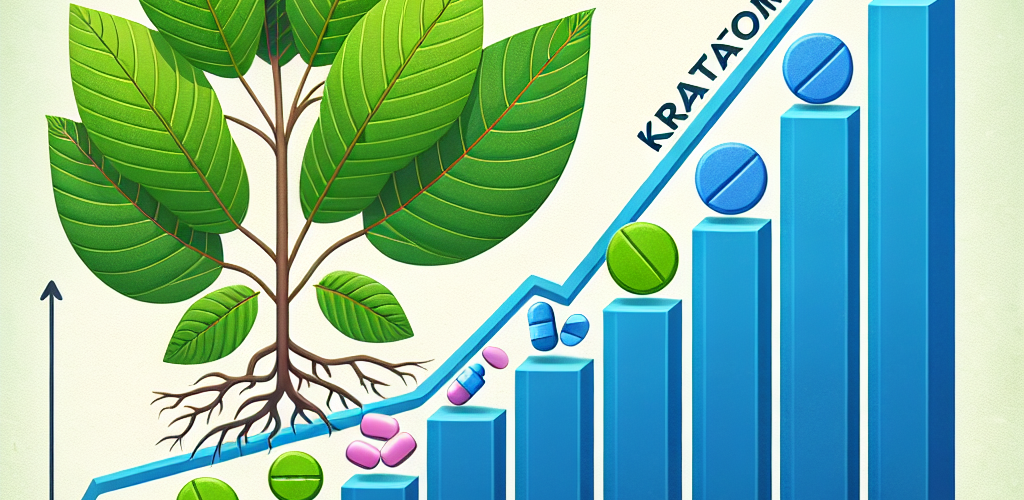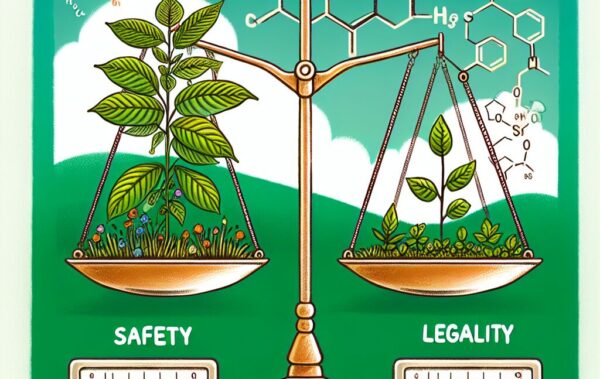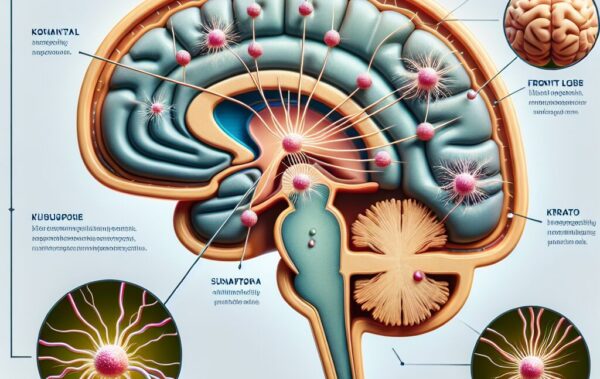- Understanding Kratom: Origins and uses
- Kratom versus traditional stimulant medications
- The legal landscape of Kratom use
- Potential risks and concerns of Kratom consumption
- Frequently asked questions about Kratom
Kratom, a tropical tree native to Southeast Asia, has been utilized for centuries by local populations for its unique properties. Traditionally, the leaves of the Mitragyna speciosa plant—the scientific name for kratom—were chewed or brewed into tea by workers and farmers seeking to boost their stamina and alleviate fatigue during long and laborious days. Kratom has a dual nature, as at lower doses it tends to produce stimulating effects, while at higher doses, it may have a sedative effect.
These properties have led to a growing interest in the West, where kratom is often considered among natural focus aids and stimulant alternatives. Unlike the caffeine in coffee or the more potent compounds found in prescription ADHD medication substitutes, kratom operates through a different set of alkaloids, mainly mitragynine and 7-hydroxymitragynine. These compounds interact with opioid receptors in the brain, yielding a spectrum of effects that range from increased energy and alertness to pain relief and relaxation.
Users often prefer kratom as a substitute because of its natural origin and the belief that it may present a lower risk of side effects compared to synthetic medications. The versatility of kratom is also a draw for many; it can be consumed in various forms such as powders, capsules, extracts, and as an addition to beverages like tea and seltzers. This wide range of consumption methods allows users to tailor their kratom experience to their personal preferences and needs.
The use of kratom spans a broad gamut of purposes. Some individuals utilize kratom to manage minor pains or to help cope with the demands and stress of everyday life. Others find it beneficial as a cognitive enhancer, supporting their ability to concentrate and remain focused without the jittery side effects often associated with traditional stimulants. This has made it particularly appealing to those seeking ADHD medication substitutes when conventional treatments are unsuitable or unwanted.
It’s important to note that the quality of kratom can vastly differ, and finding reputable sources is crucial for safety and effectiveness. Online platforms like our own offer a marketplace to find a wide range of kratom products, from standard leaf powders to specialized liquid extracts. These marketplaces serve as a convenient resource for those looking to explore the diverse applications of kratom.
In summary, kratom’s rise as a natural, alternative stimulant and its various uses stem from its unique and adaptable effects on the human body. Whether individuals are seeking stimulation, relaxation, pain relief, or assistance with focus and productivity, kratom has become a notable contender in the realm of herbal supplements.
Kratom versus traditional stimulant medications
When comparing kratom to traditional stimulant medications, one of the most striking differences is the nature of their origins. Kratom is derived from the leaves of a tree that has been part of traditional medicine for centuries, while many stimulant medications are the result of modern pharmacology. For individuals seeking stimulant alternatives, especially those cautious about synthetic compounds, kratom presents an interesting choice.
Stimulant medications, such as those used to treat Attention Deficit Hyperactivity Disorder (ADHD), often work by increasing dopamine levels in the brain, which helps to improve concentration and focus. These medications have been revolutionary for many, yet they do come with a list of potential side effects, including insomnia, appetite loss, and increased heart rate, among others. For some people, the downsides of traditional stimulants outweigh the benefits, leading them to look for ADHD medication substitutes.
Here’s where kratom steps in as a potential alternative. Many users report that, at lower doses, kratom provides a mild stimulant effect, which may enhance focus and energy without the intensity of pharmaceuticals. This has earned kratom a spot among natural focus aids, with the added benefit of a more manageable side effect profile for some individuals.
- Kratom may offer a different side effect profile compared to traditional stimulants.
- For those with sensitivities to pharmaceuticals, kratom can be a gentler option.
- Kratom’s versatility extends to various forms of consumption, which may make it a more appealing choice for individual preferences.
Of course, it’s not all black and white, and the decision to choose kratom over traditional medications should not be taken lightly. It’s crucial to understand the proper dosing, as the effects of kratom can vary significantly depending on the amount consumed. Additionally, the quality of the product is paramount; sourcing kratom from reputable vendors is key to ensuring purity and potency. For those interested, our marketplace offers a selection of high-quality kratom products, such as the well-regarded Maeng Da kratom powder, which is known for its potent energizing effects.
It’s also essential to remain informed about the latest research and legal developments concerning kratom use, as it is subject to different regulations than FDA-approved drugs. Navigating this landscape can be complex, but resources like our kratom product aggregation site can provide valuable information for those considering kratom as part of their health and wellness routine.
While kratom is not without its own potential risks and is not a direct replacement for prescription medication advice from a healthcare provider is always recommended when making changes to one’s wellness plan. The appeal of kratom lies in its natural origin and the personal anecdotes of those who have found solace in its effects – another option on the table for those seeking alternatives in their health journey.
The legal landscape of Kratom use
In recent years, there has been a notable shift in interest regarding kratom’s regulatory status, complicating its position on the market. Given its diverse uses and potential as a natural alternative to traditional stimulants, the legal landscape surrounding kratom is as multifaceted as the plant itself. Increasingly, consumers, researchers, and policymakers are engaging in dialogue about kratom, considering both its therapeutic potential and concerns related to safety and abuse.
The legal standing of kratom varies dramatically from country to country and even within different jurisdictions of the United States. Some areas treat kratom in the same category as caffeine and other legal stimulants while others have imposed regulations or outright bans. For instance, as of my knowledge cutoff date, kratom remains legal under federal law in the United States, but it is illegal in several states and municipalities. The complexities of these laws have created a patchwork of regulations that consumers must navigate.
One of the reasons for the complicated legal status of kratom is the ongoing debate about its safety profile and potential for misuse. The FDA has raised concerns about kratom, citing reports of adverse effects and the need for further study. However, advocates for the plant argue that it is a safe and effective natural focus aid when used responsibly. This contention underscores the importance of consumer education and product quality—factors that we prioritize in our marketplace.
In terms of regulation, some areas are considering the adoption of the Kratom Consumer Protection Act (KCPA), a state-level initiative that aims to regulate the manufacture, sale, and possession of kratom products. The KCPA envisions a future where products are tested for contaminants and properly labeled, thereby safeguarding the consumer without outright prohibiting the use of kratom.
Navigating the legal landscape of kratom requires staying informed about the laws specific to your locale. For those who reside in regions where it remains legal, using reputable sources to obtain kratom is essential. On our platform, you can find a variety of kratom products compliant with current regulations, ensuring that you can explore options such as green vein kratom powders, which offer a balance between stimulation and relaxation.
Nevertheless, the future of kratom’s legal status is far from certain. As research continues to unfold and public opinion evolves, so too may the laws. For many people, the possibility of kratom as a legitimate stimulant alternative or as part of a regimen for ADHD medication substitutes remains appealing. Maintaining a dialogue that encompasses safety, scientific evidence, and personal freedom is crucial as we monitor the evolving role of kratom in society.
Whether seeking krato_mDfgB5MmjTtfs6jPhin for its stimulative properties or as a natural remedy, consumers must approach its use with prudence, armed with the most up-to-date information on its legal standing and with respect to the regulations in their region. Only then can individuals make informed decisions about incorporating kratom into their routines as a potential stimulant alternative or natural focus aid.
Potential risks and concerns of Kratom consumption
 While kratom is known for its potential as a natural focus aid and is used by some as a substitute for traditional stimulants, it’s not without potential risks and concerns. Just like any substance that affects body and brain chemistry, kratom should be used thoughtfully and with an awareness of the possible downsides.
While kratom is known for its potential as a natural focus aid and is used by some as a substitute for traditional stimulants, it’s not without potential risks and concerns. Just like any substance that affects body and brain chemistry, kratom should be used thoughtfully and with an awareness of the possible downsides.
One of the primary concerns surrounding kratom consumption relates to its effect on the body’s opioid receptors. Although kratom’s compounds are distinct from classical opioids, they may still produce opioid-like effects, which can be both beneficial and problematic. Though many users report finding relief from chronic pain or using kratom as a means of curbing opioid withdrawal symptoms, others voice concerns about dependence and the potential for addiction.
Reported side effects of kratom use can include nausea, itching, dry mouth, increased urination, and constipation. In some cases, more severe effects such as liver damage, seizures, or hallucinations have been reported, although these are generally less common and may be linked to excessive use or pre-existing health conditions. As is the case with many supplements, there is also the risk of contaminated or adulterated products, which underscores the importance of sourcing kratom from reliable vendors that implement proper testing.
Given the risk of dependency, individuals using kratom as a potential alternative to ADHD medication substitutes or other stimulant alternatives are advised to monitor their use carefully. Regular or high-dose use might lead to tolerance, which can in turn lead to consuming larger quantities to achieve the same effect, thus raising the risk of unwanted side effects and dependence. This is an area where support and guidance from healthcare professionals can be invaluable.
Furthermore, the legal ambiguities and varying regulations surrounding kratom use can also present risks to consumers. Kratom’s legality often hinges upon its categorization, and its status can change as new laws are passed. This means that users must stay informed about their local laws to avoid legal repercussions.
Ultimately, while kratom can provide an avenue for those seeking natural focus aids or stimulant alternatives, it comes bundled with a need for responsible use, thorough research, and a cautious approach. Users and those curious about kratom must weigh its potential benefits against the risks and act according to the most reliable and current information available. For those committed to exploring what kratom has to offer, turning to reputable sources like our marketplace is one way to ensure that you’re accessing high-quality products that meet regulatory standards. Additionally, for a concentrated effect, some users might consider kratom extracts, which should be approached with an even greater level of caution due to their potency.
It’s crucial for anyone interested in kratom, especially individuals using it as part of a regimen for ADHD medication substitutes or stimulant alternatives, to stay informed about both the potential benefits and the risks involved. Practicing moderation, seeking high-quality products, and consulting healthcare professionals can help mitigate some of the concerns associated with kratom consumption.
Frequently asked questions about Kratom
Kratom has garnered significant attention due to its potential as a natural alternative to more conventional treatments. As a writer for a kratom product aggregation blog, we often encounter a range of inquiries from curious newcomers and seasoned users alike. This section seeks to address some of the most commonly asked questions surrounding kratom use, with the aim of providing clear, concise answers.
—
1. What exactly is Kratom?
Kratom, or Mitragyna speciosa, is a tropical evergreen tree native to Southeast Asia. Its leaves contain compounds that can have mind-altering effects. Depending on the dose, kratom can act as a stimulant, a sedative, or a substitute for opiate medications.
2. How is Kratom typically used?
Most people consume kratom as a tea, but it can also be ingested as powder, capsules, or extracts. Some even chew kratom leaves or smoke the dried leaves. Users seek out kratom for various reasons, including as a stimulant alternative, ADHD medication substitute, or for its sedative and analgesic effects.
3. Can Kratom be used as a natural focus aid?
Many users claim that in small doses, kratom can act as a stimulant without causing the jitters associated with caffeine or prescription stimulants, potentially serving as a natural focus aid. However, this is anecdotal, and more research is needed to substantiate these claims.
4. Is Kratom legal?
The legal status of kratom varies by country and in the US, by state. While it is legal at the federal level in the US, some states and municipalities have imposed their own bans. It’s important to check local laws and regulations before purchasing or using kratom.
5. Are there different strains of Kratom?
Yes, there are several strains of kratom, usually identified by the color of the vein in the leaf. Red vein strains are said to be more sedating, green vein variants are considered to strike a balance between stimulation and relaxation, and white vein strains are often sought out for their stimulating effects.
6. Where can one buy Kratom?
Kratom can be bought from a variety of sources, including local smoke shops and specialized online vendors. For a wide selection of kratom products, you may browse through our marketplace. It’s crucial to purchase from reputable sellers to ensure product quality and safety.
7. What are the potential risks of Kratom consumption?
Kratom has the potential to cause side effects, especially when taken in large doses. These can range from mild symptoms like nausea and vomiting to more severe ones like dependency, addiction, and withdrawal. It’s important to use kratom responsibly and seek advice from health professionals if you plan to use it as a medication substitute.
—
For additional questions or information on kratom strains, accessing digital scales for precise dosing, or exploring the different consumption methods such as tea, capsules, and extracts, feel free to visit our FAQ section or reach out directly. Whether seeking kratom as a stimulant alternative, ADHD medication substitute, or merely trying to understand its uses as a natural focus aid, we aim to provide the answers you need to make an informed decision.









